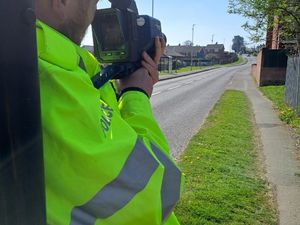Housing in Iron Age hillfort setting would 'cause irreversible damage'
Granting planning permission for a housing estate in the "landscape setting" of Oswestry's Iron Age hillforts will cause irreversible damage to unique heritage site, a campaign group says.

Cameron Homes’ application to build housing off Whittington Road on the edge of the town will be decided by Shropshire Council’s north planning committee at a meeting on Friday at Shirehall in Shrewsbury.
Although Shropshire planners are recommending approval, campaigners say that there are strong grounds to refuse the hugely unpopular application.
A spokesperson for local campaign group, Hands Off Old Oswestry Hillfort (HOOOH), said: “All eyes will be on the north planning committee this Friday. The decision will seal the fate of one of Shropshire’s and Britain’s greatest archaeological landmarks. We trust they will balance all the evidence in their decision, including the irreversible damage that will be inflicted on a unique heritage site and the substantial local and national opposition to development.”
Local objectors include Oswestry Town Council, North Shropshire MP Helen Morgan, Oswestry & Border Archaeology & History Group, Cambrian Heritage Railways Ltd, and Oswestry and District Civic Society.
Objections have also come from The Prehistoric Society, Council for British Archaeology, RESCUE (The British Archaeological Trust), Historic Buildings and Places. Additionally, members of the public have submitted 128 letters against and 12,000 objectors have signed a petition during the longstanding campaign to protect the setting of the site acclaimed as the ‘Stonehenge of the Iron Age’.
The HOOOH continued: “Refusal is warranted if the proposals do not meet the special conditions enshrined in SAMDev policy S14 as agreed in the Statement of Common Ground with Historic England. These are meant to ensure the harm to heritage is minimised and the public benefits weighing against this harm are delivered. They also underpinned the Inspector’s decision to allocate the site for development.
“But a number of conditions are simply not being met. These are the northern limit for development, the provision of walking and cycling access along and across the Cambrian Railway, and improvements to the junction of Whittington Road and Gobowen Road.
“Given the overwhelming opposition to the plans, Shropshire Council must respect and adhere to policy and underpinning agreements for controversial development, or we seriously undermine public trust in the local planning process.”
The report to the committee says Historic England has not objected, Campaigners say the position of the heritage consultee is much more nuanced.
“Historic England signed a Statement of Common Ground with conditions for development that are easily tested and form part of the legal framework of SAMDev which Shropshire Council must adhere to.
“Historic England has also stressed that views will see 'extensive’ and ‘substantial change’ and that planners must be sure that proposals meet certain requirements. We believe there is a strong case that they do not.”
The Council for British Archaeology warns that although not 'substantial' in planning terms – which would be destruction of the asset itself – the impacts still constitutes harm . The Prehistoric Society calls it ‘a very significant level of harm’ relative to the monument’s significance, which would normally lead to refusal of the planning application.
Campaigners insist that planners have not adequately demonstrated that the loss or harm is necessary when the 83 houses can be built elsewhere, given that more than sufficient housing land has been identified for Oswestry’s future growth, including east of the A5 bypass.
They add that planning consent could set a precedent for further damaging development across the hillfort’s eastern setting.
Members of the HOOOH campaign will be attending the meeting with support from the heritage sector in the form of an expert witness.





